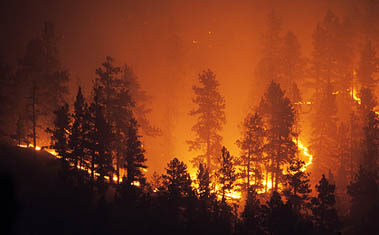
This year’s rabid wildfires are in part the result of dry climatic conditions. An overly dense forest consisting of dead and dying trees, however, is more likely to turn into a massive conflagration than a well tended forest. One problem has been publicized for decades; nearly one hundred years of fire suppression has left many forests overly dense where the trees now compete for moisture, sunlight, and nutrients.
Another part of the story is that fewer trees are being removed from public lands. As a result there is more mortality in the forest and more dead and dying trees left to burn. Not because land managers are unknowing or unconcerned, rather because they have limited resources and poor institutions. Forest thinning and restoration is timber harvest. Timber harvest on public lands has become overly tedious and costly.
Our national forests are managed to provide for multiple uses including timber, grazing, mining, recreation, wildlife, fisheries, and biodiversity. The commodity production from the forest has waned as more people are taking to recreate in the woods. As those forests get old, however, without natural or human tree removal they become more susceptible to fire. Disturbance is a natural phenomenon in the forest.
I am a frequent visitor to public lands. I don’t like to see logging trucks or harvest along the trail but that is far preferred to wildfire and its path of devastation.
Originally posted at Environmental Trends.



